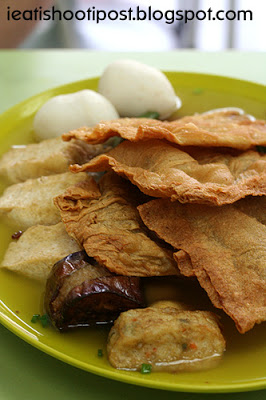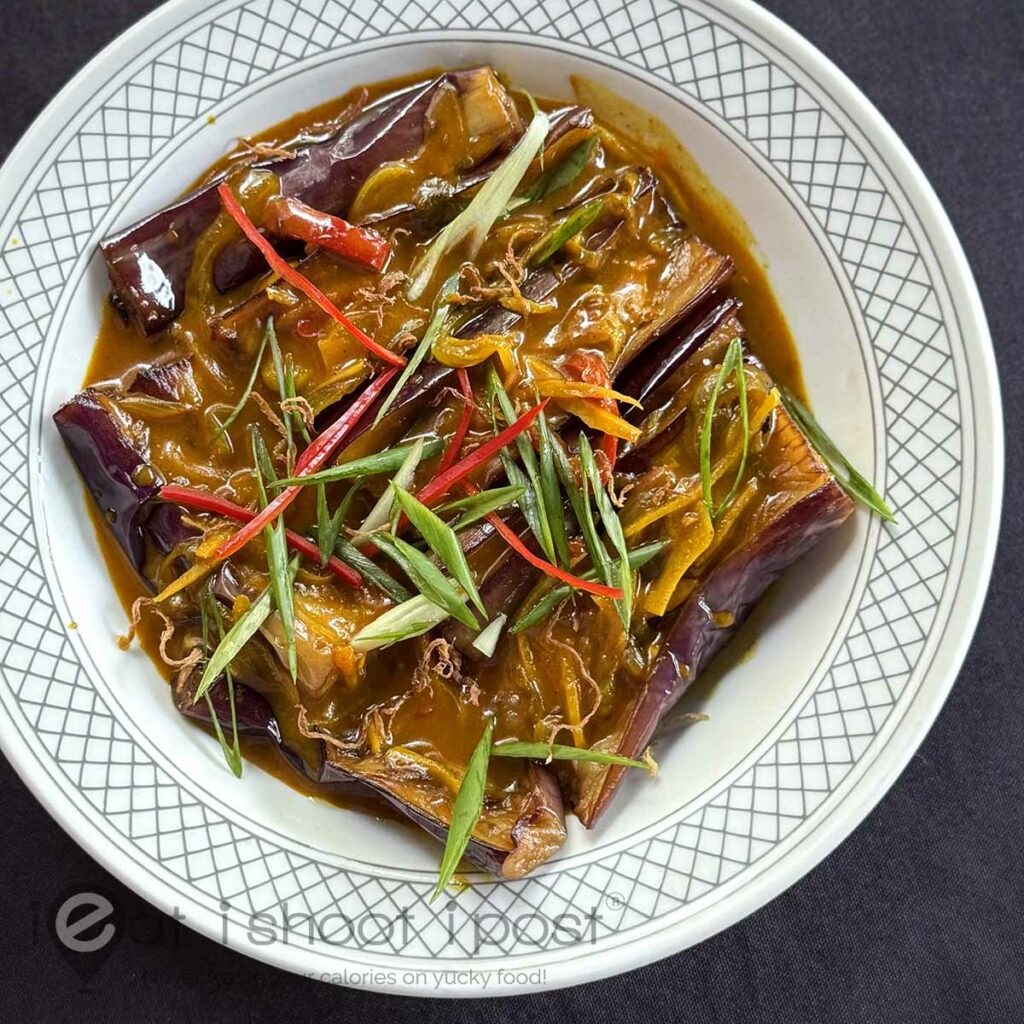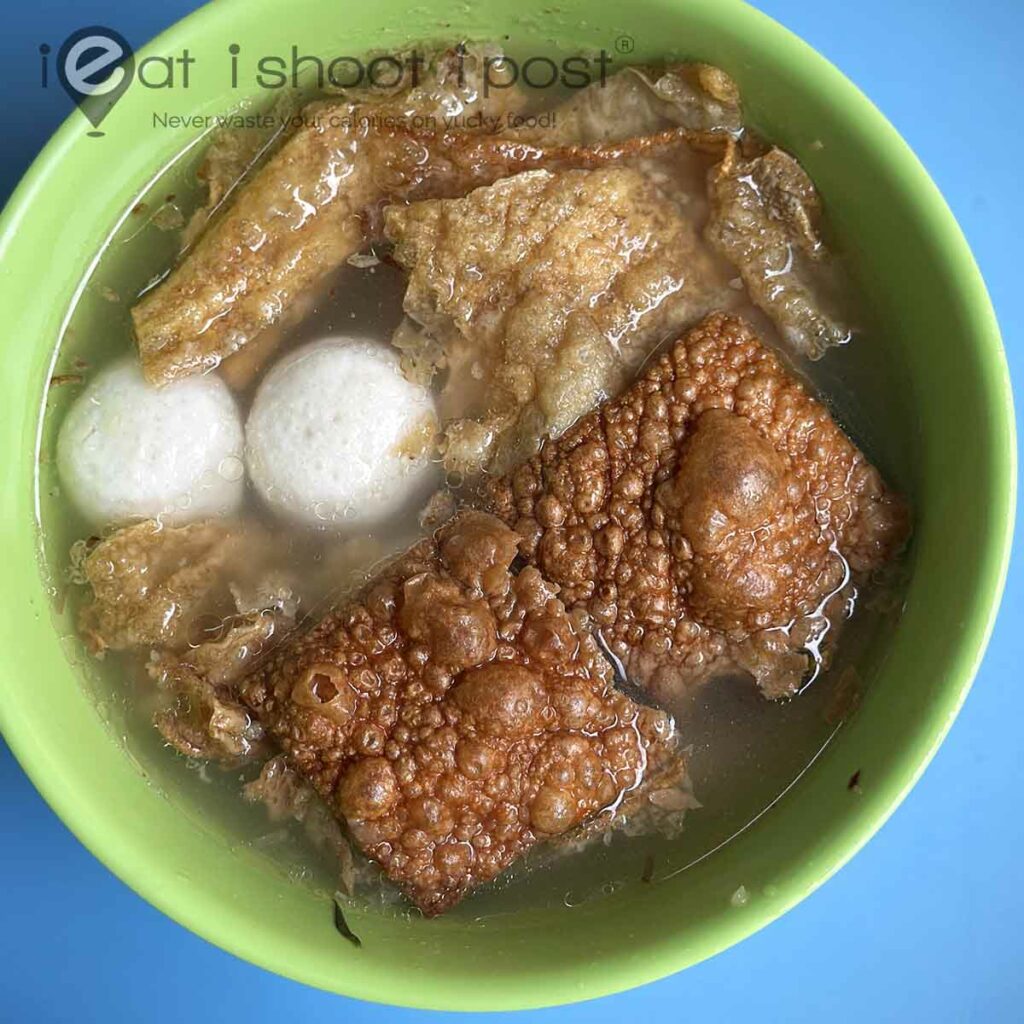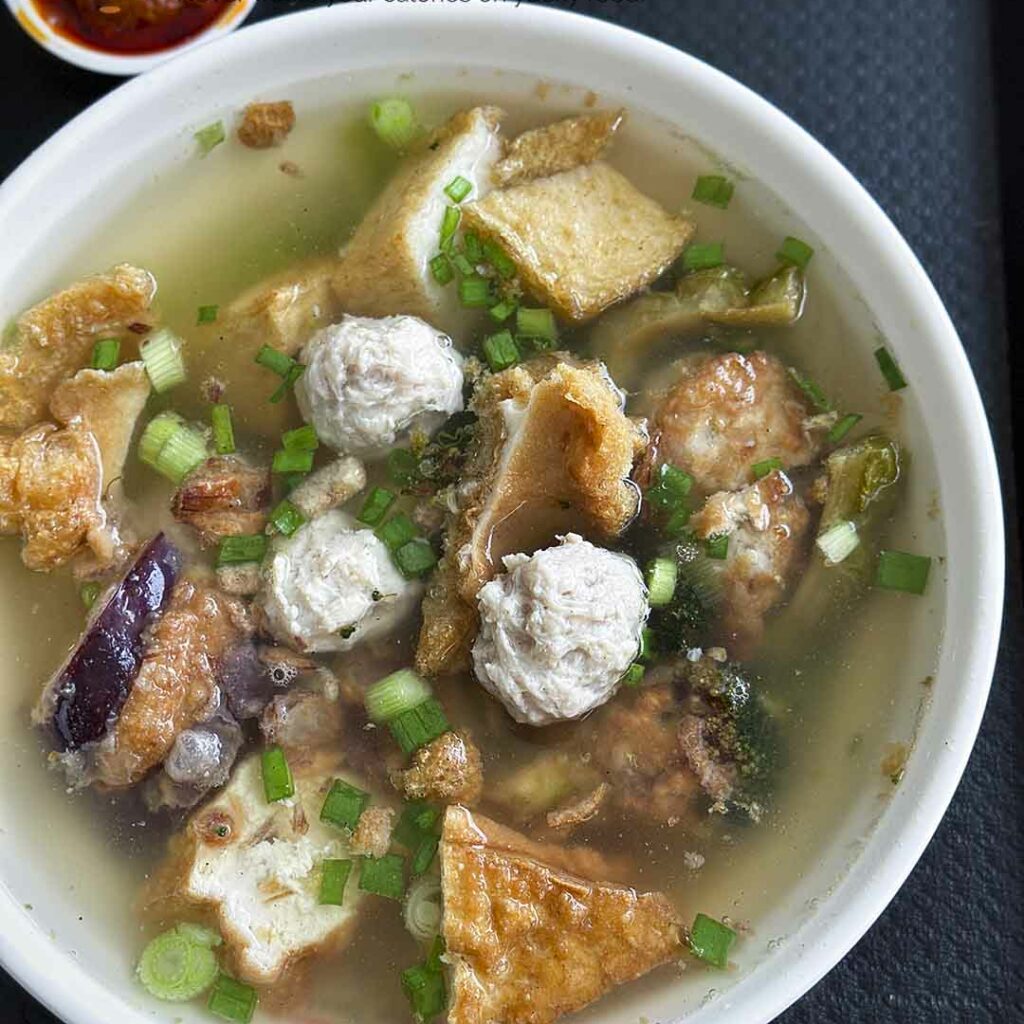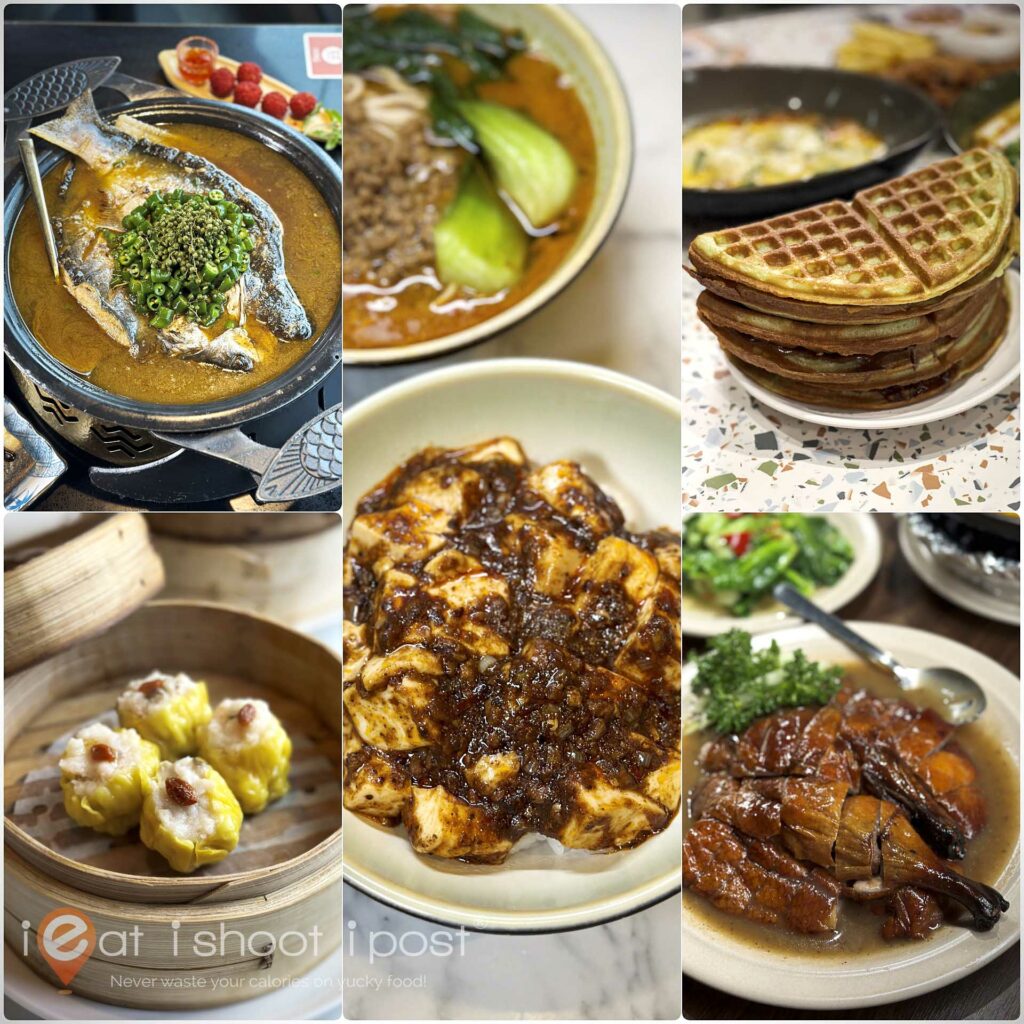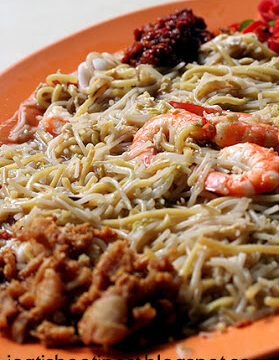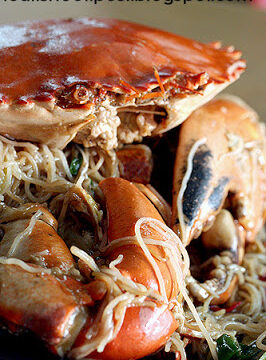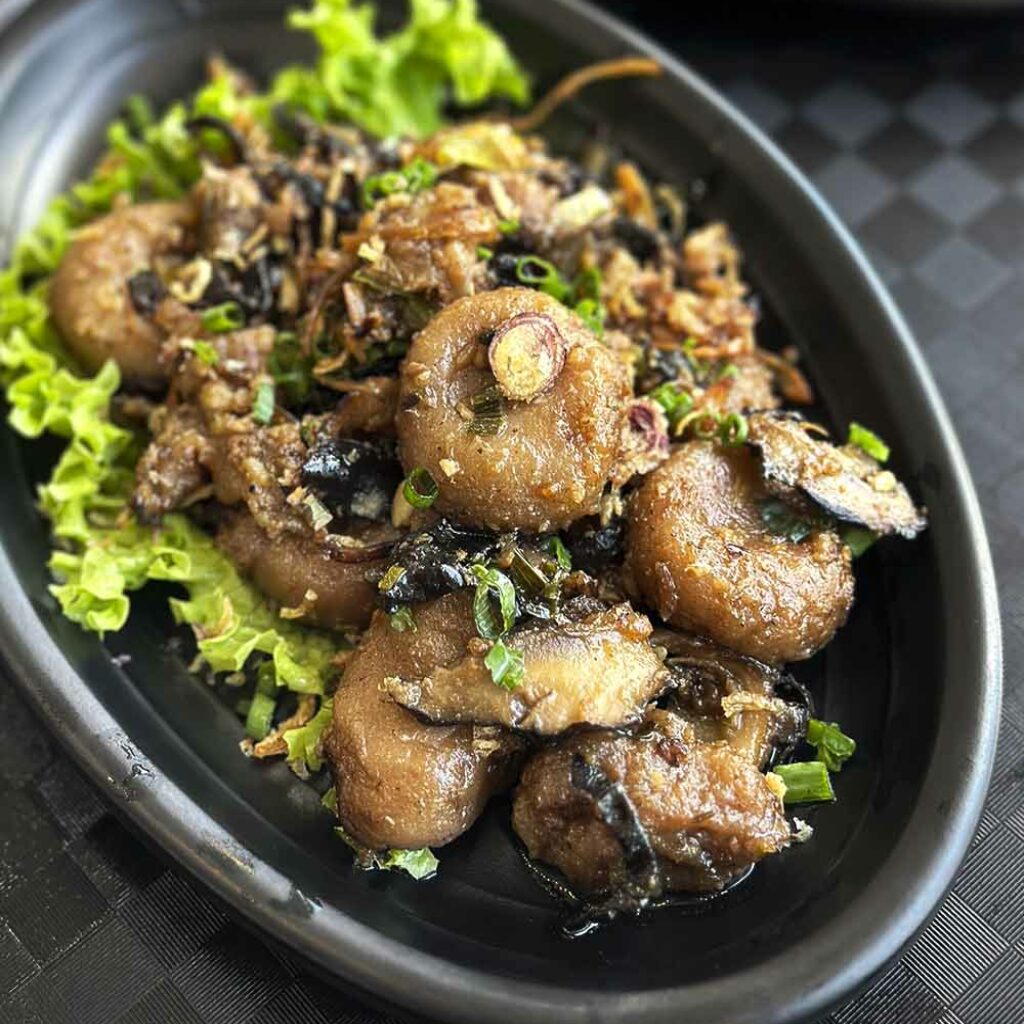How is Ampang Yong Tau Foo different from normal Yong Tau Foo?
Is it because you don’t get to choose the items you want, or is it the fact that it gets served in a plate rather then in a bowl with noodles or bee hoon? Or is there any real difference in the items? So what really is the most important characteristic that qualifies a Yong Tau Foo as “Ampang”?
Certainly, it seems that the word “Ampang” confers a certain amount of privilege on a Yong Tau Foo. Instead of paying $3 for a bowl of Yong Tau Foo, suddenly you are paying $5 to eat a portion. As you probably know, “Ampang” refers to this famous village in KL where there are 3 shops selling similar style Yong Tau Foo. So the name “Ampang” describes a certain style of Yong Tau Foo in the same way as the name “Katong” describes a certain style of Laksa.
I don’t know why I keep writing about Yong Tau Foo when it is really one of those things that don’t excite me that much. Funny that. I guess I tend to eat Yong Tau Foo when I want to have something that has less cholesterol. BUT having said that, the Yong Tau Foo here is pretty good though I am finding it very difficult to rave about something that is so plain. Apart from fish paste and the sweet sauce, all the rest of the ingredients are pretty standard, know what I mean? Chillies are chillies, brinjal is brinjal and I find it hard to differentiate between a good ladies finger and a bad one. So it boils down to fish paste and sweet sauce. Both are good. Don’t know what else to say. I’ll leave it to the Yong Tau Foo experts to explain the finer details of appreciating Yong Tau Foo to us. 4/5
Conclusion
Place I come to to get something tasty and low cholesterol so that I can hop over to Chin Mee Chin the other side to have my kopi and kaya toast with a thick slice of butter!
Special thanks to KL boy Russ for his inputs to the blog!



